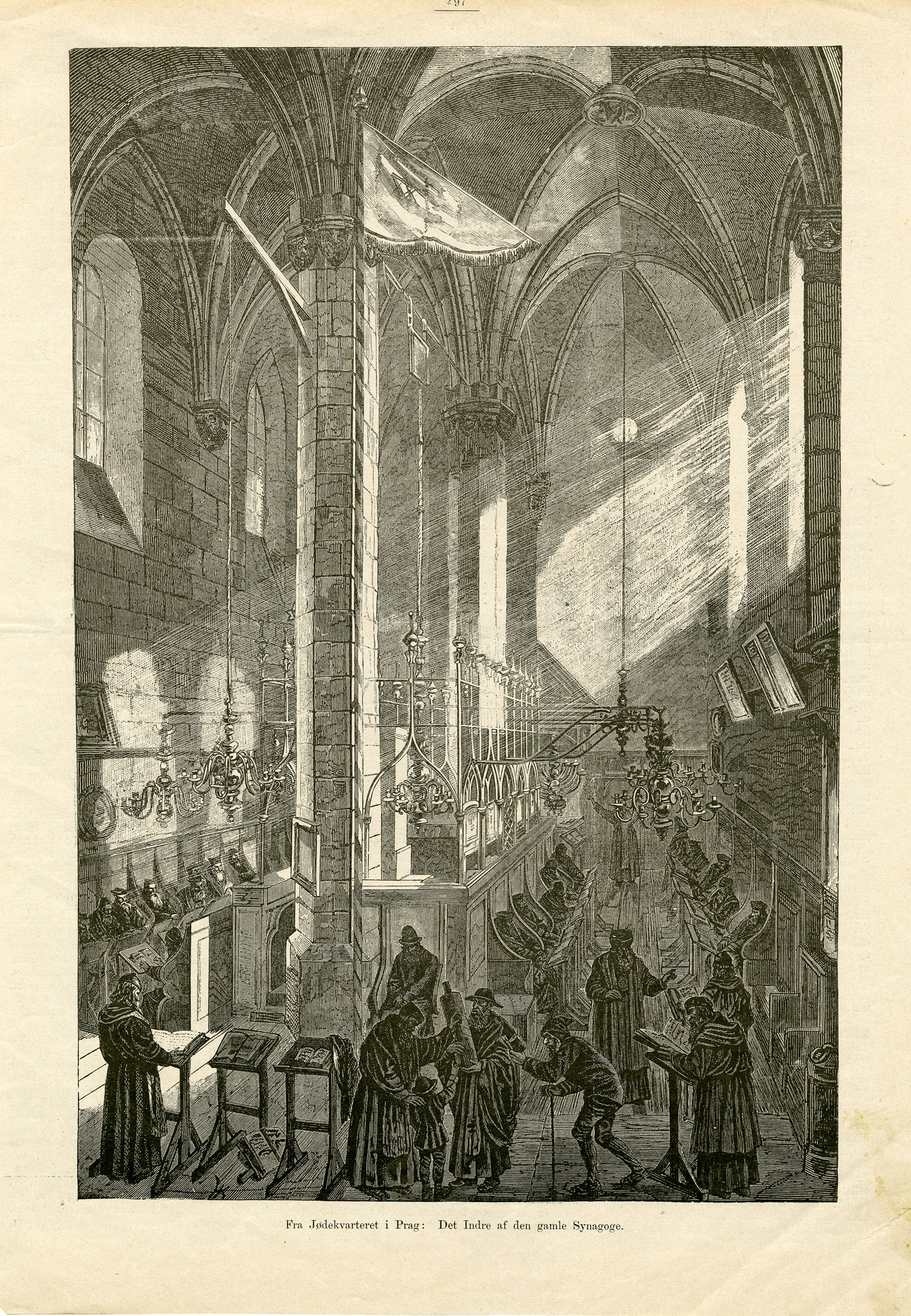Published in the 1890s, this print is one of scores that depict the interior of Prague’s Altneuschul (Old New Synagogue), today the oldest synagogue in continuous use, though others, such as the synagogue of Worms, existed at the time this print was published. The double-nave Gothic building was constructed in the last third of the 13th century. The classical columns of the ark, which are supported on volute brackets, were installed the 16th century. The synagogue’s present-day appearance dates to a restoration of 1716. It was repaired again in 1883, 1921–1926, and 1966–1967.
As early as the 19th century, the Altneuschul was a popular tourist destination, and romantic depictions of the synagogue and the nearby Old Jewish Cemetery of Prague have been popular for more than 150 years. Architecturally, the Altneuschul is distinctive as one of the few surviving double nave synagogues, a form that was not uncommon in the late Middle Ages. It is divided lengthwise into two naves by two octagonal piers. The bimah, from where the Torah is read, stands between the piers; its wrought iron enclosure with pointed arches presumably dates to the 15th century. The beautifully carved Gothic gable that was part of the original ark has been fitted into the modern one. Benches around the perimeter provide seating in a meetinghouse style that follows a tradition of synagogue design going back at least to the first century.
The main synagogue building is surrounded by a number of low annexes added throughout its history. Narrow windows about three feet above floor level connect the women’s annexes with the main hall. The floor of the men’s synagogue is lower than the vestibule floor. Much attention has been paid to the ribbing of the vaults, which are sustained by the central piers and wall brackets. Each vault is given an extra “fifth” rib, which might be for support, or, as has been suggested, to avoid the pattern of a Christian cross. Five ribbed vaults also occur in the 13th-century synagogue at Miltenberg.
